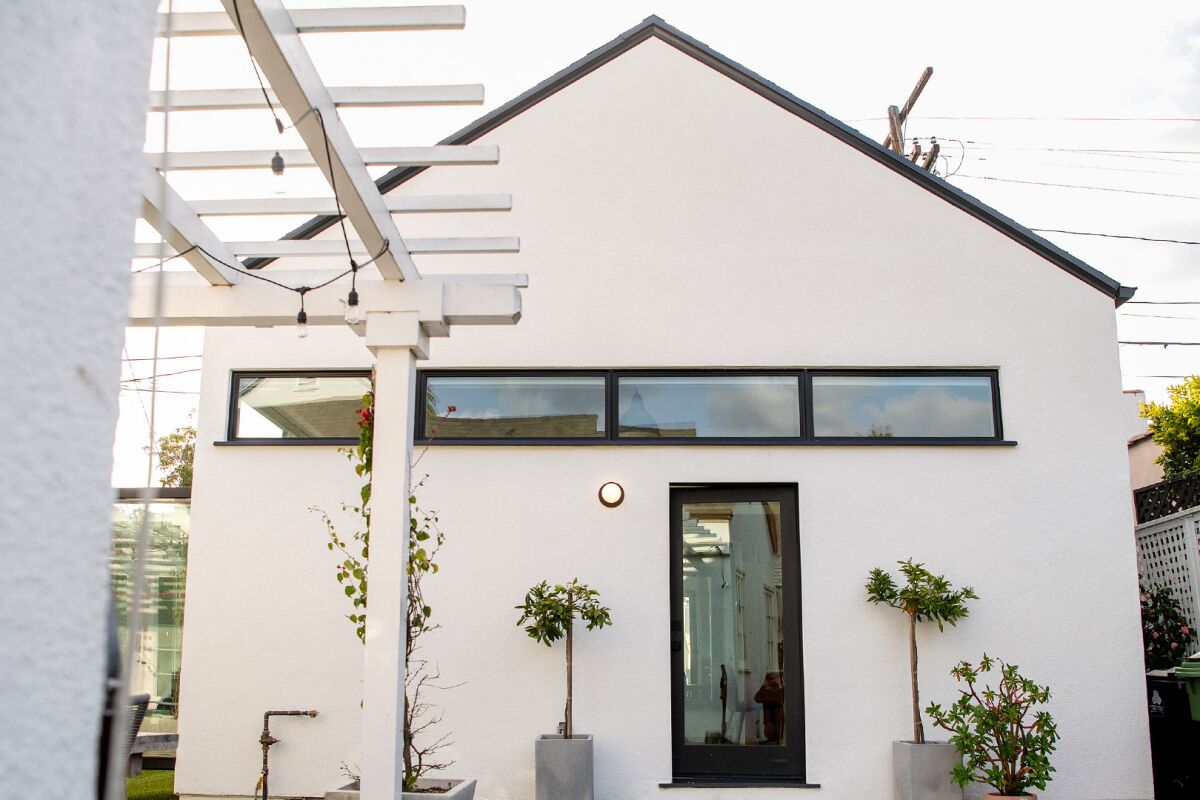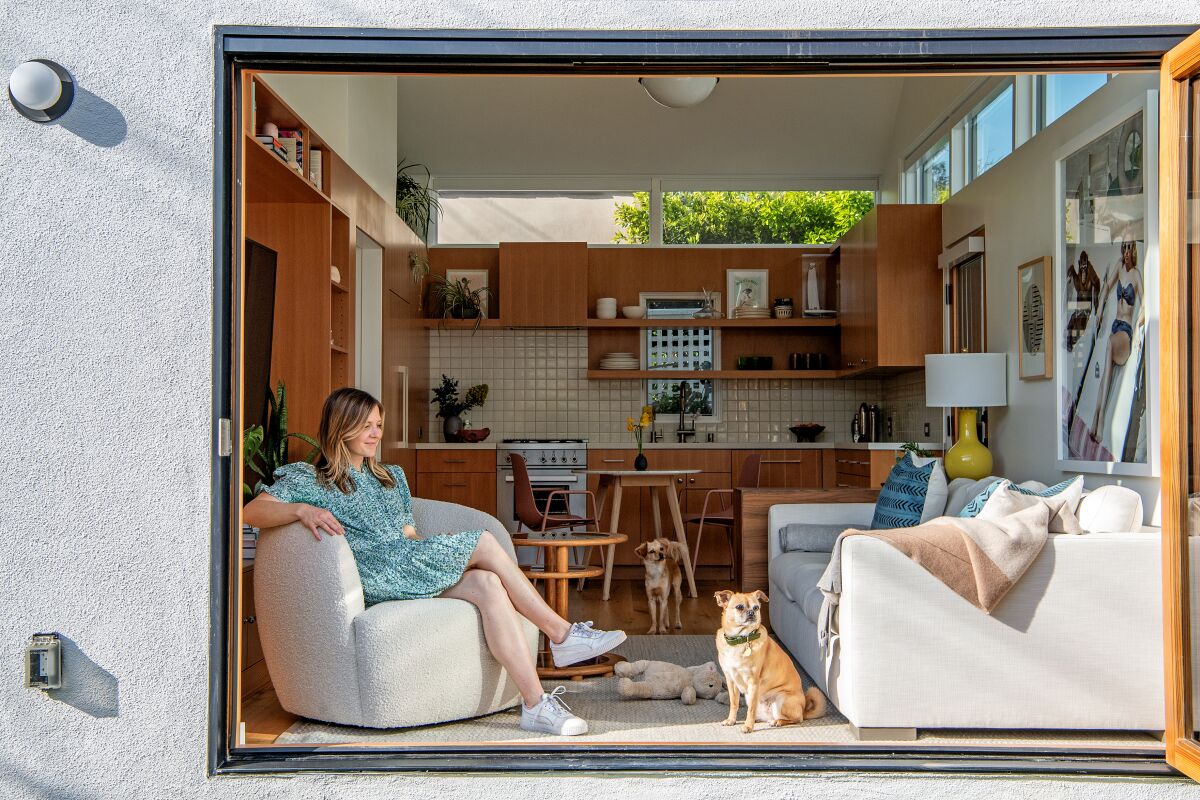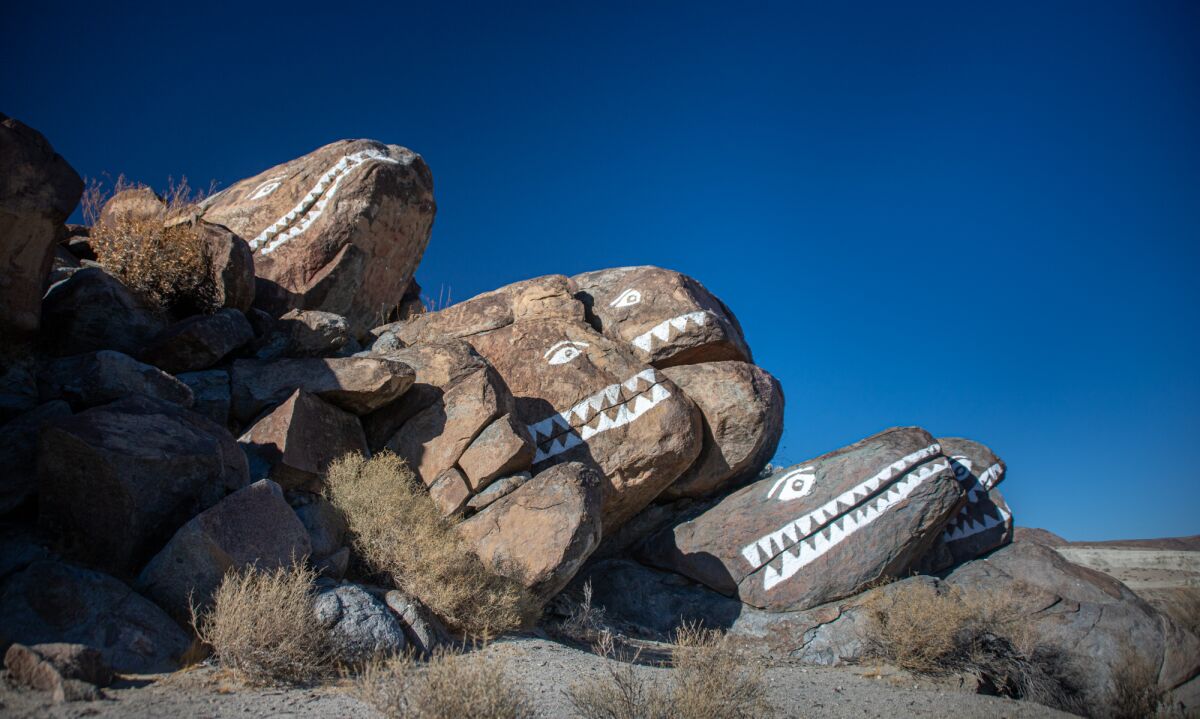Good morning, and welcome to the Essential California newsletter. It’s Tuesday, April 4.
As the Golden State’s housing crisis continuing to crunch residents, there’s one type of home more Californians are eyeing: accessory dwelling units, or ADUs.
You might also know them as “granny flats” — small houses built in backyards to create additional housing for family, friends or a paying tenant.
In recent years, it’s become easier to get ADU projects approved, thanks to state laws that overrode local restrictions and knocked down obstacles that hindered building (not all California cities are on board, though).
In 2021, ADUs represented 15% of all new housing approved in the state, according to Jon Healey, senior editor of the L.A. Times’ Utility Journalism team.
“There’s a lot of interest in this topic,” Jon told me. “People are looking for ways to do these projects, and so they want help.”
A lot of these questions are things that you’ve never done before… ‘How do I hire somebody to build this for me?’ That’s new ground for a lot of people.
That’s why The Times recently launched You Do ADU, a six-week newsletter course to help people understand the complicated process.
If you’re curious about ADUs, here are four things to know.
1. They’re a major investment (money and time)
OK, duh, but it’s worth stating plainly, because many people underestimate the costs and misunderstand the rules around them.
“These are not quick projects,” Jon told me. “This is as difficult and as complex as building a house because it’s got all those features.”
As for how much money it takes to build an ADU, Jon said that depends largely on what type of structure you build and where in California you build it.
A garage conversion can run around $100,000 to $250,000, based on quotes Jon has heard. The price jumps up for detached units, to the tune of $200,000 to $300,000. Of course, those estimates can soar depending on the specifics of a design, quality of finishes and any problems encountered in the planning process.
Jon’s conservative estimate: Be prepared for a six-month approval process, then another six months of construction.
“The time also depends on how much your local government wants to make your life miserable,” he added.

ADU designed by Bunch Design.
(Mariah Tauger)
But there are ways to shave off some of that time. L.A., for example, maintains a list of preapproved ADU designs, Jon explained, which “cuts the processing time dramatically.”
Those designs still need to be tweaked based on a specific property, though. “Some of them are more fanciful than affordable,” Jon noted, “but that will give you an idea of what you can do with a small space.”
On the construction side, homeowners can contract companies that specialize in prefabricated ADU structures, which can take months off construction time.
“If you’re in an incredible hurry, there’s a way to do it quickly,” Jon said.
2. State requirements are basic, but there can be a load of local boxes to tick
State law gives a few main parameters for an ADU to be deemed eligible for a permit in any residential or mixed-use zone. The structure has to be:
- no more than 800 square feet
- no more than 16 feet tall
- set back at least 4 feet from the property line
Those are the main qualifiers, but individual cities have their own list of requirements homeowners must meet, some more cumbersome than others.
The city of Los Angeles is considered to be ADU-friendly, Jon said, based on developers he’s talked with. But while the city is “very supportive throughout the process… there’s a lot of hoops to jump through,” he noted.
The city’s Department of Building and Safety has an intricate list of required documentation for every facet of the structure — floor plan and roof plans, but also details related to plumbing, electrical and irrigation components, just to name a few.
Some cities also have expensive permit fees in place to deter people from building ADUs, Jon said. And while there is a state grant program to help cover some of the up-front planning costs for ADUs, it’s on hold while the government looks to “shift from public funding to private and nonprofit funding.” Other programs might exist on a city-by-city basis.
“You just have to check in with your local government and [ask]: ‘Hey, is this such an important part of your housing solutions that you’re actually going to help people do this?’” Jon said.
3. Different people want different things from ADUs
Creating a rental unit to generate income is a “common thread,” Jon said. But in his conversations with people who have built or are in the process of building ADUs, he notes the uses can evolve over time.
“Many people,’ they say ‘OK, I’m gonna need a place for… my parents to live,’ but they’re not ready for it yet,” he explained. “So I’m going rent it out for a few years — I’m going to get a return on my investment that way.’”

Bridget Bousa hangs out with her sister’s dog, Bunny, inside her recently built ADU in the Fairfax district last month. Bousa, 27, worked with Bunch Design to add the ADU to her property, and she’s now renting it to her sister and sister’s boyfriend.
(Mariah Tauger / Los Angeles Times)
ADUs can also provide space for a daughter, son or other family member to live while attending college or starting on their career path. In some cases, homeowners move into their ADUs for a scaled-down life after kids move out.
ADUs can also function as a home for caregivers looking after someone in a main house.
Anyone looking to market an ADU as a short-term rental might run into issues, though — L.A., San Francisco and other cities ban that practice.
“You have to be realistic about what the return on your investment is going to be with one of these things,” Jon said.
4. ADUs are a piece of the housing crisis solution
“The more housing stock, the better,” Jon said, and that’s good news for renters, who will have more options as more ADUs are built and listed for rent.
And since ADUs are often separate structures, they offer more privacy than one would get renting a room in someone’s house with shared space.
Jon also noted the role housing advocates and grass-roots efforts have played in getting ADUs to the place they are now. Detached housing is not new to California, but efforts to create affordable housing for family, friends and neighbors was long non-permitted. Jon explained:
One of the reasons the state got heavily into trying to clear the way for ADUs to be legal is because they saw a lot of non-permitted ADUs they wanted to bring into compliance… the ad hoc efforts to solve the housing crisis, they’re incremental, they’re not going to be a grand stroke that’s going to put us all into a better situation housing-wise, but they’re part of the solution. That’s where ADUs fit in.
Interested in learning more about ADUs? You can read Part 1 of Jon’s You Do ADU newsletter here, and subscribe here to get it in your inbox.
And now, here’s what’s happening across California:
Note: Some of the sites we link to may limit the number of stories you can access without subscribing.
L.A. STORIES
A Dodger fan’s act of love and trespassing made the social media rounds last week. Times reporter Nathan Solis caught up with the fan, who jumped into the outfield on Opening Day to propose to his girlfriend (now fiancée) and was quickly tackled by stadium security. Los Angeles Times
Times writer Tyrone Beason visited the Museum of Tolerance in L.A.’s Pico-Robertson neighborhood — a Jewish enclave where residents were targeted in recent shootings. “With many reluctant to talk about the nation’s legacy of injustice, do we have it in us to embrace one another’s humanity?” he asks. Los Angeles Times
Check out “The Times” podcast for essential news and more
These days, waking up to current events can be, well, daunting. If you’re seeking a more balanced news diet, “The Times” podcast is for you. Gustavo Arellano, along with a diverse set of reporters from the award-winning L.A. Times newsroom, delivers the most interesting stories from the Los Angeles Times every Monday, Wednesday and Friday. Listen and subscribe wherever you get your podcasts.
POLITICS AND GOVERNMENT
Seismic experts are sounding the alarm on a common housing design they say is vulnerable to collapse in a major earthquake: single-family homes with living spaces atop garages. California is launching a limited pilot program (very limited) to help homeowners pay for retrofits. Los Angeles Times
Gov. Gavin Newsom wants to shift some mental health funding to help house people with severe mental illness. But some officials at mental health organizations worry that shift will mean less money for other services as providers struggle with workforce crisis. CalMatters
A new state bill would allow victims of human trafficking or domestic violence who allegedly committed violent crimes to present evidence of their abuse as part of their defense in criminal trial. The legislation from state Assemblymember Matt Haney (D-San Francisco) would also enable those already convicted of violent crimes to use evidence of abuse in petitions to have their cases vacated. Los Angeles Times
CRIME, COURTS AND POLICING
Could California slice its ban on switchblades? A lawsuit filed in San Diego’s U.S. District Court argues the type of knife should be allowed under the 2nd Amendment. The San Diego Union-Tribune
A San Jose-based construction company has been ordered to stop dumping hazardous waste on protected agricultural land in Almaden Valley. Santa Clara County and state investigators say United Concrete Cutting created a 15-foot wide “volcano” filled with overflowing concrete waste and had been diverting waste into a creek. The Mercury News
HEALTH AND THE ENVIRONMENT
Much of Southern California was under a high wind warning Monday and into Tuesday morning as strong gusts rattled through communities. The wind also brought heightened risk of power outages and wildfires. Los Angeles Times
California got a helluva lot of snow this winter — possibly the deepest snowpack recorded in more than 70 years. Now officials are bracing for a “big melt,” as concerns about torrential flooding in communities in the valleys and foothills mount. Los Angeles Times
There’s another possible downside to all that water: a gnarly mosquito season. The bloodsuckers require standing water for reproduction. And with water now in abundance in much of the state, the risk of bites and mosquito-spread illness could increase. The Sacramento Bee
CALIFORNIA CULTURE
San Francisco now has an official city animal: the wild parrot. After an intense voting process that started with 16 animals, the parrots of Telegraph Hill narrowly beat out the popular sea lions of Pier 39. San Francisco Chronicle
Free online games
Get our free daily crossword puzzle, sudoku, word search and arcade games in our new game center at latimes.com/games.
AND FINALLY
Today’s California landmark comes from Scott Harrison of Thousand Oaks: the grinning Fish Rocks.

Fish Rocks, about ten miles east of Ridgecrest, photographed Feb. 6, 2021.
(Scott Harrison)
Scott, who also happens to be a retired Times employee, writes:
About ten miles east of Ridgecrest, along Highway 178, are the human-painted Fish Rocks. Each of the rocks is about 10 feet tall. Initially, local residents painted the rocks in the 1930s. In the 1970s, the graffiti-covered rocks got painted over. But in recent years, the eyes and teeth were restored. The rock formation also had names like Whale Rocks or Fish Head Rocks.
What are California’s essential landmarks? Fill out this form to send us your photos of a special spot in California — natural or human-made. Tell us why it’s interesting and what makes it a symbol of life in the Golden State. Please be sure to include only photos taken directly by you. Your submission could be featured in a future edition of the newsletter.
Please let us know what we can do to make this newsletter more useful to you. Send comments to [email protected].
Stay connected with us on social media platform for instant update click here to join our Twitter, & Facebook
We are now on Telegram. Click here to join our channel (@TechiUpdate) and stay updated with the latest Technology headlines.
For all the latest Music News Click Here
